
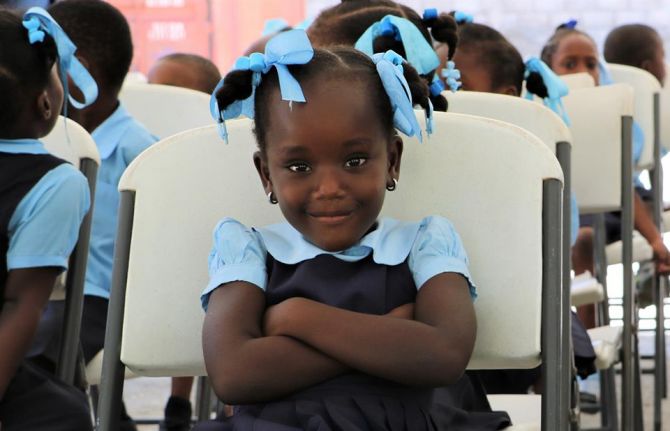
Press Release
Multilateral agencies launch a joint plan to boost global health goals
24 September 2019 24 September 2019NEW YORK, 24 September 2019—Today at the United Nations General Assembly, 12 multilateral agencies launched a joint plan to better support countries over the next 10 years to accelerate progress towards the health-related Sustainable Development Goals (SDGs).
Developed over 18 months, Stronger Collaboration, Better Health: Global Action Plan for Healthy Lives and Well-being for All outlines how a dozen multilateral health, development and humanitarian agencies will collaborate to be more efficient and provide more streamlined support to countries to deliver universal health coverage and achieve the health-related SDG targets.
Healthy people are essential for sustainable development and for ending poverty, promoting peaceful and inclusive societies as well as protecting the environment. Over the last few decades, significant gains have been made in key areas of health, but the 2030 targets will not be met without redoubled efforts.
“The plan is called, ‘Stronger Collaboration, Better Health’ for a reason,” said Dr Tedros Adhanom Ghebreyesus, Director-General of WHO. “Although collaboration is the path, impact is the destination. The release of this plan is the beginning, not the end, of that path.”
Universal health coverage is key to meeting the health-related goals and addressing health inequities. If trends continue, only up to 5 billion of the world’s population will be covered by essential health services in 2030, as highlighted in the Universal Health Coverage: Global Monitoring Report, released last week by WHO. To leave no one behind, countries need to address health inequities. Improved collaboration and coordination can help countries tackle complex health challenges and bring innovative solutions.
Together, the 12 agencies contribute nearly one-third of all development assistance to health. Under the Global Action Plan, the agencies commit to strengthening their collaboration to:
-
Engage with countries better to identify priorities, plan and implement together;
-
Accelerate progress in countries through joint actions under 7 accelerator themes, which represent common challenges for many countries and where the agencies’ mandates, expertise and resources offer solutions, namely: 1) Primary health care 2) Sustainable health financing 3) Community and civil society engagement 4) Determinants of health 5) Innovative programming in fragile and vulnerable settings and for disease outbreak responses 6) Research and development, innovation and access, and 7) Data and digital health. They will also work together to advance gender equality and support the delivery of global public goods;
-
Align by harmonizing their operational and financial strategies and policies in support of countries to increase efficiency and reduce the burden on countries; and
-
Account, by reviewing progress and learning together to enhance shared accountability.
Governments are setting priorities, developing implementation plans and intensifying efforts to achieve the health-related SDG targets. Demand from countries for the Global Action Plan is growing. “Achieving the health-related SDG goals is key for Nepal. Strengthening primary health care and enhancing data utilization for evidence-based planning and decision-making are two accelerators that will help bring us closer to achieving the SDG goals,” said Deputy Prime Minister of Nepal, Mr Upendra Yadav.
Through the Global Action Plan, the agencies will help countries deliver on international commitments in addition to the SDGs, such as those made in Astana on primary health care and at the UN General Assembly High-level Meeting on Universal Health Coverage this week in New York.
Coordinated by WHO, the Global Action Plan for Healthy Lives and Well-being for All, is in response to a call from Germany, Ghana and Norway, with support from the United Nations Secretary-General, Antonio Guterres, for more effective collaboration and coordination among global health organizations to achieve the health-related SDGs. The 12 signatory agencies to the plan are Gavi, The GFF, the Global Fund, UNAIDS, UNDP, UNFPA, UNICEF, UNITAID, UN Women, World Bank Group, WFP and WHO.
Notes to Editors
Quotes from the 12 Principals are available below.
Seth Berkley, Chief Executive Officer - GAVI, the Vaccine Alliance
“Gavi has only been able to achieve the extraordinary impact of vaccinating over three-quarters of a billion children since 2000 by working together with many of the 12 agencies as an Alliance,” said Dr Seth Berkley, CEO of Gavi, the Vaccine Alliance. “We know how much can be achieved with strong partnerships, but also how much potential there is to do more together and reach those who don’t have access to health. The right collaboration can become a lever for wider primary health care and, by extension, universal health coverage. That is why this new plan is so important, bringing together some of the biggest players in global health to create the conditions for better health and well-being for all.”
Dr Muhammad Ali Pate, Director - The Global Financing Facility for Women, Children and Adolescents (The GFF)
“The Global Financing Facility supports the Global Action Plan because it recognizes that collaboration needs to take place at the country level and must start from a country’s specific needs and priorities. Our collaboration should have two aims: accelerating progress for those left furthest behind and ensuring that all our support as development agencies is to countries to strengthen their own health and financing systems.”
Peter Sands, Executive Director - Global Fund to Fight AIDS, TB and Malaria (The Global Fund)
“Our calculus is simple: the Global Fund is a partnership, and the better we collaborate and coordinate with partners, the more impact we can have,” said Peter Sands, Executive Director of the Global Fund. “We are committed to playing our part in making the Global Action Plan a reality.”
Gunilla Carlsson, Executive Director a.i. - The Joint Programme United Nations Programme on HIV/AIDS (UNAIDS)
“The Global Action Plan must lead to greater investment in community-led efforts across the world because when communities are empowered, results follow. In the AIDS response, community engagement and ownership have resulted in an increase in the uptake of HIV prevention and treatment services, a reduction in stigma and discrimination and in the protection of human rights. Empowering communities will be central to achieving good health for all.”
Achim Steiner, Administrator - United Nations Development Programme (UNDP)
“The Global Action Plan is the kind of system-wide partnership that can help countries to accelerate progress on the 2030 Agenda for Sustainable Development and realize the promise of health and well-being for all.”
Natalia Kanem, Executive Director - United Nations Population Fund (UNFPA)
“Ensuring that health systems can deliver sexual and reproductive health services to all women and young people is integral to ensuring good health and well-being across the life course. The Plan is our collective roadmap for putting the 'universal' in universal health coverage by working together in new ways, aligned with countries' needs and priorities, to make these services accessible to all."
Henrietta Fore, Executive Director - United Nations Children's Fund (UNICEF)
“Millions of vulnerable children and young people are dying for want of medicines and health services. Strengthening primary health care means improving our ability to reach every last child,” said Henrietta Fore, UNICEF Executive Director. “We are committed to working together with governments and partners to make sure that this goal becomes a reality one day.”
Lelio Marmora, Executive Director - Unitaid
“Innovation is key to reaching global health goals. Working together, we inspire each other, we spark new ideas, and we align our efforts to overcome challenges on the ground,” Unitaid Executive Director, Lelio Marmora said. “With the Global Action Plan our work stands to make a greater impact.”
Phumzile Mlambo-Ngcuka, Executive Director - The United Nations Entity for Gender Equality and the Empowerment of Women (UN Women)
“By 2030 we want to see more women and girls with informed decision-making and control over their bodies, their health and their futures, and with access to reproductive and maternal health services. They should be living securely and prospering, free from any form of violence and benefiting from non-discriminatory legislation. The Global Action Plan can serve as a road map for collective gender-transformative action to make this a lasting reality.”
Annette Dixon, Vice President, Human Development - World Bank Group
“We see investments in health as vital for countries to build their human capital. By working better together with partner countries and holding ourselves accountable, especially at the country level, we will be able to accelerate progress towards health and equal opportunity for all.”
David Muldrow Beasley, Executive Director - World Food Programme (WFP)
“We won’t have a world without hunger unless people can get access to the services that help them get healthier. These goals go together, hand in glove. That’s why the World Food Programme is committed to working with governments and our partners around the world to make more progress toward a healthier, well-fed world.”
Dr Tedros Adhanom Ghebreyesus, Director-General - World Health Organization (WHO)
“The plan is called ‘Stronger Collaboration, Better Health’ for a reason,” said Dr Tedros Adhanom Ghebreyesus, Director-General of the WHO. “Although collaboration is the path, impact is the destination. The release of this Plan is the beginning, not the end, of that path,” he added.
UNAIDS
The Joint United Nations Programme on HIV/AIDS (UNAIDS) leads and inspires the world to achieve its shared vision of zero new HIV infections, zero discrimination and zero AIDS-related deaths. UNAIDS unites the efforts of 11 UN organizations—UNHCR, UNICEF, WFP, UNDP, UNFPA, UNODC, UN Women, ILO, UNESCO, WHO and the World Bank—and works closely with global and national partners towards ending the AIDS epidemic by 2030 as part of the Sustainable Development Goals. Learn more at unaids.org and connect with us on Facebook, Twitter, Instagram and YouTube.
Global Action Plan for Healthy Lives and Well-being for All

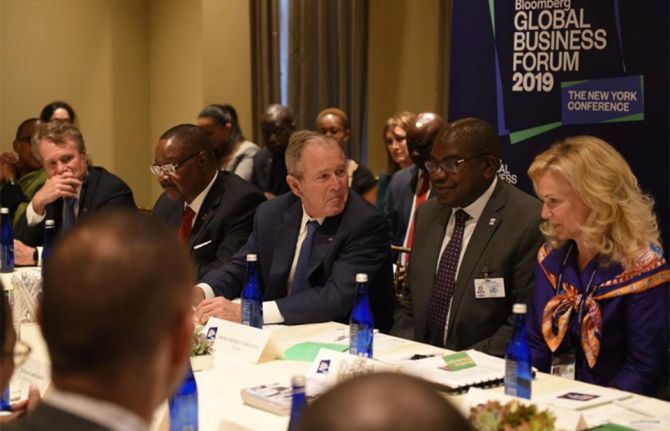

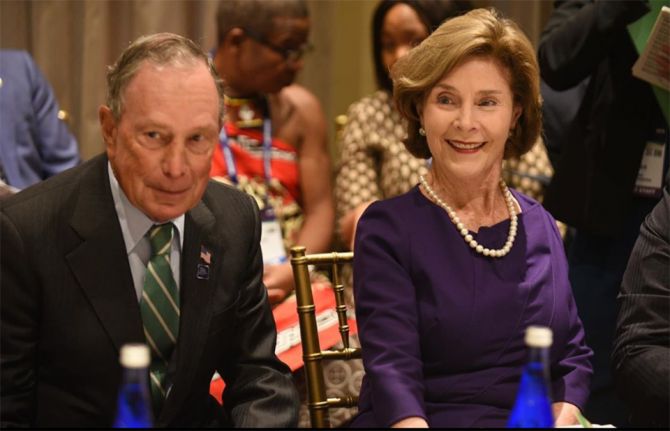
Press Release
Go Further partnership reaches over half a million HIV-positive women with cervical cancer screening in its first year
25 September 2019 25 September 2019The United States’ PEPFAR program, the George W. Bush Institute, Merck and UNAIDS are aiming to end AIDS and cervical cancer in Sub-Saharan Africa within a generation through an innovative public-private partnership
NEW YORK, 25 September 2019—On the margins of the 2019 United Nations General Assembly, former President George W. Bush and Ambassador Deborah L. Birx announced that the Go Further partnership to end AIDS and cervical cancer has reached over half a million HIV-positive women with cervical cancer screening and treated thousands of women for pre-invasive cancerous lesions in its first year. The partnership aims to reduce new cervical cancer cases by 95 percent among the estimated 3.8 million HIV-positive women who live in eight high-burden African countries.
At the Bloomberg Global Business Forum, President Bush, Mrs. Laura Bush, and Ambassador Birx met with His Majesty King Mswati III of Eswatini, The Right Honourable Dr. Thomas Thabane of Lesotho, His Excellency President Peter Mutharika of Malawi, The Honorable Michael Bloomberg, CEO of Bank of America Brian Moynihan, and others.
"We strongly believe that by helping these leaders save lives in their countries it makes the world a better place and makes America more secure," President Bush said. "We have many leaders here all of whom are taking the lead, all of whom are responsible, all of whom are measuring results. It's important for the American people to know that the results are astounding."
"The future of each of your countries depends on all of your citizens—men and women—taking care of their health," Mrs. Bush added.
“Go Further is helping women in Africa to lead longer, healthier lives,” said Ambassador Birx, M.D., United States Global AIDS Coordinator and Special Representative for Global Health Diplomacy, who leads PEPFAR. “By leveraging the robust health care delivery platforms in Africa strengthened through over $85 billion in total U.S. government global HIV/AIDS investments, we will protect millions of HIV-positive mothers, daughters, aunts, and grandmothers—who are alive and thriving with HIV treatment—from the threat of cervical cancer.”
Launched in May 2018, Go Further is an innovative public-private partnership between the U.S. President’s Emergency Plan for AIDS Relief (PEPFAR), the George W. Bush Institute (Bush Institute), the Joint United Nations Programme on HIV/AIDS (UNAIDS), and Merck (known as MSD outside of the United States and Canada). For maximum impact, the partnership focuses on reaching HIV-positive women in countries with among the highest HIV prevalence and cervical cancer incidence rates in the world.
“Go Further builds on the Bush Institute’s longstanding initiative to support women in Africa by scaling efforts to save more lives,” said Holly Kuzmich, Executive Director of the Bush Institute. “Healthy and empowered women contribute to healthier families, communities, and countries, and this partnership is proud to invest in high-burden nations to improve women’s health and economic futures, reduce suffering, and expand the reach of care.”
An estimated 100,000 women are diagnosed annually with cervical cancer in Sub-Saharan Africa. Without treatment, 62 percent of these women would be expected to die from the disease. Additionally, women who are HIV-positive are five times more likely to develop invasive cervical cancer. To address these risks, Go Further is increasing access to the human papillomavirus vaccine to prevent cervical cancer, expanding the availability of vital cervical cancer screening, and providing treatment for women most vulnerable to developing cervical cancer. With minimal additional investment, these low-cost interventions can save millions of lives and help secure global gains against HIV/AIDS.
“At Merck, we are committed to addressing the health care needs of women in the developing world and are proud to partner with PEPFAR, the Bush Institute, and UNAIDS on Go Further,” said Carmen Villar, Vice President, Social Business Innovation, Merck. “Through this partnership we are addressing cervical cancer in HIV-positive women in Sub-Saharan Africa, one of the populations most heavily impacted by cervical cancer, not only through screening and treatment but also through prevention.”
“To save a woman’s life by providing access to treatment for HIV, yet she dies from cervical cancer because she hasn’t had access to cancer screening is unacceptable,” said Gunilla Carlsson, Executive Director a.i. UNAIDS. “The Go Further partnership is critical to ensure that HIV and cervical cancer services are integrated and available to the women and girls that need them most."
The Go Further strategy builds on seven years of collaboration between PEPFAR and the Bush Institute and evolves the partnership to save more lives.
Learn more about Go Further at www.gofurther.org, and follow the partnership on Twitter, Instagram, and Facebook.
The U.S. President’s Emergency Plan for AIDS Relief
PEPFAR is the United States government’s response to the global HIV/AIDS epidemic, which has invested over $85 billion since 2003 – the largest commitment by any nation to address a single disease in history. Through the compassion and generosity of the American people, PEPFAR has saved 17 million lives, prevented millions of HIV infections, and helped transform the global HIV/AIDS response. For more information, please visit www.pepfar.gov, and connect with PEPFAR on Twitter, Facebook, Instagram and YouTube.
George W. Bush Institute
Housed within the George W. Bush Presidential Center, the George W. Bush Institute is an action-oriented, nonpartisan policy organization with the mission of developing leaders, advancing policy, and taking action to solve today’s most pressing challenges. For more information, please visit www.bushcenter.org.
UNAIDS
The Joint United Nations Programme on HIV/AIDS (UNAIDS) leads and inspires the world to achieve its shared vision of zero new HIV infections, zero discrimination and zero AIDS-related deaths. UNAIDS unites the efforts of 11 UN organizations—UNHCR, UNICEF, WFP, UNDP, UNFPA, UNODC, UN Women, ILO, UNESCO, WHO and the World Bank—and works closely with global and national partners towards ending the AIDS epidemic by 2030 as part of the Sustainable Development Goals. Learn more at unaids.org and connect with us on Facebook, Twitter, Instagram and YouTube.
Contact
PEPFARDavid Haroz
tel. +1 202 445 3269
harozd@state.gov
Bush Institute
Miriam Spradling
tel. +1 972 639 6099
mspradling@bushcenter.org
UNAIDS
tel. +41 79 514 6896 / +41 22 791 42 37
communications@unaids.org
Press centre
Download the printable version (PDF)

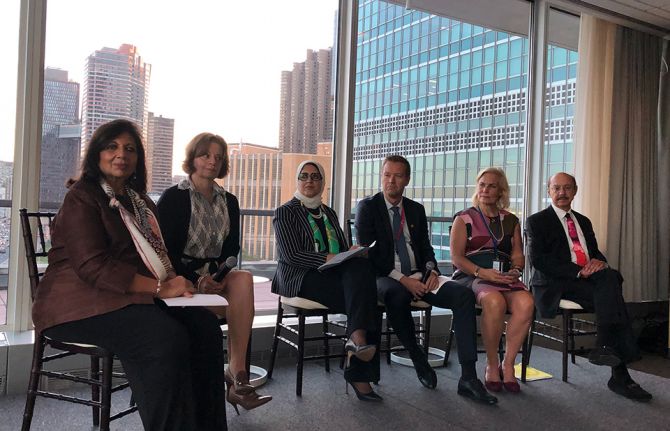
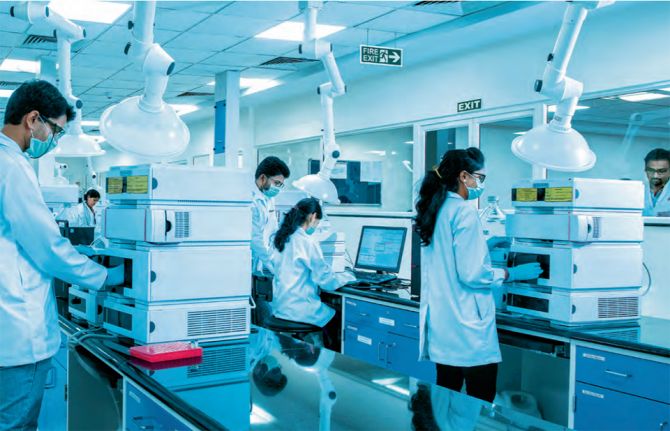
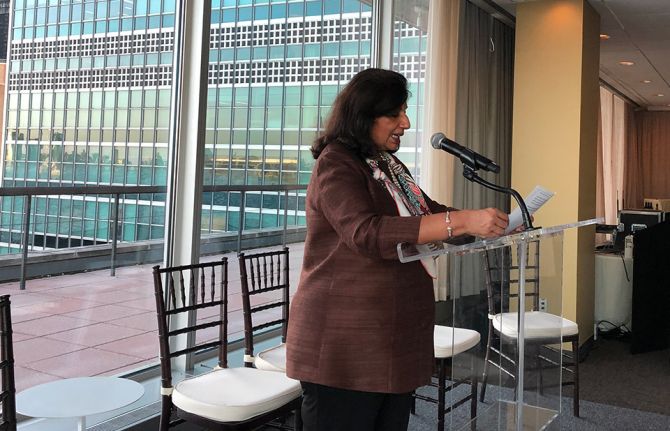
Press Release
UNAIDS welcomes announcement of significant price reduction in the cost of life-saving insulin for low- and middle-income countries
25 September 2019 25 September 2019New initiatives to support access to health care announced at the UNAIDS Health Innovation Exchange meeting on the sidelines of the United Nations General Assembly
NEW YORK/GENEVA, 25 September 2019—UNAIDS welcomes the announcement by Biocon Biologics, a biotech company, to offer recombinant human insulin (rh-insulin) at US$ 0.10 per day (for the average 40 units of insulin that is required per patient per day) to low- and middle-income countries, a reduction of 50% from current prices. This announcement was made at an event hosted by UNAIDS to promote innovation in access to health care.
“Price should not be reason to choose between life and death,” said Gunilla Carlsson, UNAIDS Executive Director, a.i. “AIDS activism has led the way in reducing the price of life-saving medicines and saving millions of lives. Today, we are glad that the universal health coverage movement is also benefitting from the lessons learned by the AIDS response.”
More than 400 million people worldwide are affected by diabetes. Evidence shows that, as they live longer, many people living with HIV and on HIV treatment are increasingly susceptible to noncommunicable diseases.
Several other companies made new commitments in support of increasing access to health care at an event organized by the UNAIDS Health Innovation Exchange on the topic of decentralization, innovation and sustainable financing, which was held in collaboration with the Center for Global Health and Development at the United Nations General Assembly in New York, United States of America.
The Wadhwani Institute for Artificial Intelligence, an independent, non-profit research institute and global hub that is developing artificial intelligence solutions for social good, has committed to establishing a centre of excellence to leverage the use of artificial intelligence for global health.
ThoughtFocus, a technology services company working on the internet of things (IoT), will provide access to its IoT platform, which is optimized to serve as an affordable, reliable and efficient platform to build and extend IoT solutions for transportation, logistics, manufacturing and utilities related to health-care services. The IoT has opened up a world of possibilities in health: when connected to the Internet, ordinary medical devices can collect invaluable additional data, give extra insight into symptoms and trends, enable remote care and generally give people more control over their lives and quality of treatment.
Zenysis, a technology company, announced that it was investing US$ 3.5 million to implement data pilots in five countries over the coming three years that will help countries to make evidence-informed decisions in rolling out universal health coverage and prioritizing investments in health systems.
“The private sector has a key role to play in advancing the Sustainable Development Goals,” said Ms Carlsson. “At UNAIDS, we believe that innovation and partnerships are the future to solving many of the basic development issues that confront us daily.”
UNAIDS
The Joint United Nations Programme on HIV/AIDS (UNAIDS) leads and inspires the world to achieve its shared vision of zero new HIV infections, zero discrimination and zero AIDS-related deaths. UNAIDS unites the efforts of 11 UN organizations—UNHCR, UNICEF, WFP, UNDP, UNFPA, UNODC, UN Women, ILO, UNESCO, WHO and the World Bank—and works closely with global and national partners towards ending the AIDS epidemic by 2030 as part of the Sustainable Development Goals. Learn more at unaids.org and connect with us on Facebook, Twitter, Instagram and YouTube.
Contact
UNAIDS Mediatel. +41 79 514 6896
bartonknotts@unaids.org
UNAIDS Media
tel. +41 22 791 42 37
communications@unaids.org
Press centre
Download the printable version (PDF)

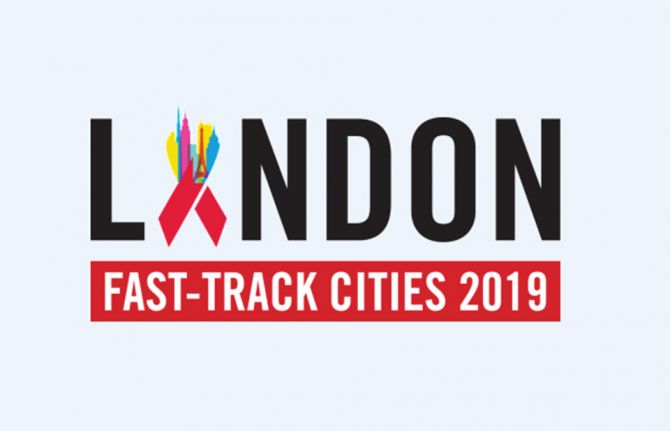
Press Release
Global leaders unite to tackle health inequalities
09 September 2019 09 September 2019Delegates from more than 300 municipalities join global Fast-Track Cities conference on urban HIV, tuberculosis, and viral hepatitis
LONDON, UNITED KINGDOM, 9 September 2019 — London Mayor Sadiq Khan today welcomed city, municipal, and global leaders to Fast-Track Cities 2019, the inaugural conference of more than 300 cities and municipalities prioritizing their responses to urban HIV, tuberculosis (TB), and viral hepatitis. Speaking at the conference, Mayor Khan highlighted the problem of health inequalities across the world, as well as the need to end the stigma still associated with HIV. He also reiterated the bold ambition for London to achieve the target of no new HIV infections, deaths, and stigma by 2030.
“I’m honoured that city and health leaders from all around the world are uniting today in London. The first international gathering of Fast-Track Cities will be a truly historic event in our fight against HIV and health inequalities,” said Mayor Khan. “I’m also proud of the work London is doing to tackle HIV and inequality, and am pleased that we will be able to share our knowledge and experience with others. But despite our progress, there is still much more to be done as too many people continue to catch the virus. To truly end all new cases of HIV in London, it’s high time the Government made PrEP available via the NHS for all those who need it. No ifs, no buts, and no more pilots – we know it works, it stops the spread of infection and saves money in the long run.”
More than half of the world’s population currently lives in urban centers where the risk of contracting HIV, TB, and hepatitis is significantly higher due to urban dynamics such as social behavior, migration, unemployment, and social and economic inequalities. However, cities and municipalities also have inherent advantages and offer important opportunities to accelerate health responses and take transformative action to ensure that equitable access to health services is available to everyone.
“We have seen that for an effective response to HIV it is critical to remove inequalities, power imbalances, marginalization, and discrimination,” said Gunilla Carlsson, Executive Director a.i., of UNAIDS, one of four core partners of the Fast-Track Cities initiative. “Cities must use their advantages to leverage innovation, create social transformation, and build equitable societies that are inclusive, responsive, resilient, and sustainable,” she added.
Organized by the International Association of Providers of AIDS Care (IAPAC), in collaboration with the Joint United Nations Programme on HIV/AIDS (UNAIDS) and other partners, the Fast-Track Cities 2019 conference is being held from September 9-11, 2019, at the Barbican Centre. The conference’s aim is to highlight successes achieved across the Fast-Track Cities network, address cross-cutting challenges faced by local stakeholders, and share best practices in accelerating urban AIDS responses, inclusive of co-infectious diseases such as TB and viral hepatitis. The conference features plenary sessions, panel discussions, and abstract presentations by representatives from more than 300 Fast-Track Cities.
“Health inequalities are preventing people living with HIV, TB, and viral hepatitis, notably from disenfranchised and minority ethnic communities, from accessing the services they need to live longer, healthier lives," said Dr. José M. Zuniga, President/CEO of the International Association of Providers of AIDS Care (IAPAC), one of the core partners of the Fast-Track Cities initiative and the conference’s organizer. “We are convening in London because the city’s high level of political commitment, public health leadership, support from clinical and service providers, and engagement with affected communities have enabled the city to surpass the Fast-Track Cities’ programmatic HIV targets. We are here to shine a light on London’s efforts to reduce and eliminate health inequalities that contravene the principles of social justice.”
When London joined the Fast-Track Cities initiative in January 2018, the city had already met the UNAIDS 90-90-90 targets, which are defined as 90% of people living with HIV knowing their status, 90% of people who know their status accessing HIV treatment, and 90% of people accessing HIV treatment achieving viral suppression. FTC London, a pan-city group of stakeholders steering the city’s Fast-Track Cities engagement, has made outreach to the black, Asian, and minority ethnic (BAME) community a priority in their “London Getting to Zero” strategy.
The “High-Level Panel on Health Inequalities,” which was the official opening of the Fast-Track Cities 2019 conference, included the following elected officials:
- Kostas Bakoyannis (Mayor, Athens, Greece)
- Josefina Belmonte (Mayor, Quezon City, Philippines)
- Winston Ennis (Deputy Mayor, Kingston, Jamaica)
- Simone Kukenheim (Deputy Mayor, Amsterdam, Netherlands)
- Fernando Medina (Mayor, Lisbon, Portugal)
- Svante Myrick (Mayor, Ithaca, NY, USA)
- Robb Pitts (Chairman, Fulton County, Atlanta, GA, USA)
- Mykola Povoroznyk, (First Deputy Mayor, Kyiv, Ukraine)
- Gennadiy Trukhanov (Mayor, Odesa, Ukraine)
In addition to IAPAC’s Dr. Zuniga, and UNAIDS’ Ms. Carlsson, several global public health leaders also participated in the “High Level Panel on Health Inequalities,” including:
- Amb. Deborah L. Birx (US Global AIDS Coordinator, PEPFAR)
- Cary James (CEO, World Hepatitis Alliance)
- Suvanand Sahu (Deputy Executive Director, Stop TB Partnership)
- Maimunah Mohd Sharif (Executive Director, UN-Habitat)
- Trevor Stratton (Board Member, GNP+)
- Marijke Wijnroks (Chief of Staff, Global Fund to fight AIDS, TB and Malaria)
The panel was moderated by UK-based broadcaster and former BBC journalist Henry Bonsu.
Press passes for Fast-Track Cities 2019 are available by contacting IAPAC Director of Communications Zack Pesavento at zpesavento@iapac.org.
The conference program is available at: https://www.iapac.org/conferences/fast-track-cities/#program
About the International Association of Providers of AIDS Care (IAPAC)
With more than 30,000 members globally, IAPAC is the largest association of clinicians and allied health professionals working to end AIDS as a public health threat by 2030. For more information about IAPAC and our global activities, please visit: https://www.iapac.org/
About the Fast-Track Cities Initiative
Fast-Track Cities is a global partnership between almost 300 cities and municipalities, the International Association of Providers of AIDS Care (IAPAC), the Joint United Nations Programme on HIV/AIDS (UNAIDS), the United Nations Human Settlements Programme (UN-Habitat), and the City of Paris that are collaborating to end the epidemics of HIV, TB, and viral hepatitis by 2030. The initiative was launched on World AIDS Day 2014 in Paris. For more information please visit: https://www.iapac.org/fast-track-cities/about-fast-track/
UNAIDS
The Joint United Nations Programme on HIV/AIDS (UNAIDS) leads and inspires the world to achieve its shared vision of zero new HIV infections, zero discrimination and zero AIDS-related deaths. UNAIDS unites the efforts of 11 UN organizations—UNHCR, UNICEF, WFP, UNDP, UNFPA, UNODC, UN Women, ILO, UNESCO, WHO and the World Bank—and works closely with global and national partners towards ending the AIDS epidemic by 2030 as part of the Sustainable Development Goals. Learn more at unaids.org and connect with us on Facebook, Twitter, Instagram and YouTube.

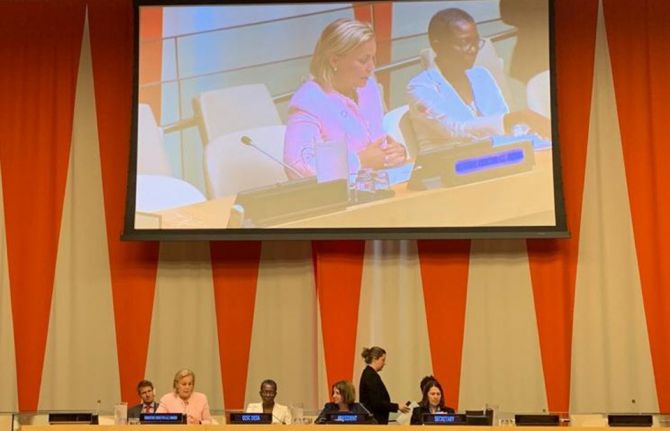
Press Release
United Nations Economic and Social Council calls for urgent action to scale up the AIDS response
26 July 2019 26 July 2019ECOSOC resolution calls for the United Nations General Assembly to convene a high-level meeting to review progress made against the 2016 Political Declaration on Ending AIDS
GENEVA, 26 July 2019—The United Nations Economic and Social Council (ECOSOC) has adopted a resolution that calls on countries to urgently scale up evidence-informed programmes to end the AIDS epidemic as a public health threat by 2030. It says the AIDS epidemic is not yet over and calls for reinvigorated efforts by all stakeholders.
Adopted on 24 July 2019 during ECOSOC’s coordination and management meeting in New York, United States of America, the resolution calls on the United Nations General Assembly to decide by no later than September next year the date of a high-level meeting to review progress made on the United Nations commitment to end AIDS as a public health threat by 2030.
While it welcomes the advances made towards the 2020 targets, the resolution expresses concern about disparities in progress among countries and calls for stronger efforts to protect human rights and promote gender equality.
The ECOSOC resolution also welcomes efforts by UNAIDS to refine and adapt its operating model to more effectively support countries to end the AIDS epidemic within the framework of the Sustainable Development Goals.
“ECOSOC created UNAIDS 25 years ago as an innovative joint venture that brings together the comparative advantages of several United Nations organizations to tackle the AIDS epidemic,” said Gunilla Carlsson, UNAIDS Executive Director, a.i. “Our multisectoral, multistakeholder and people-centred approach helps countries to translate global-level commitments to country-level action that leads to real results for people on the ground, including for those being left behind.”
Acknowledging the urgent need to close the HIV resources gap, the resolution encourages countries to scale up domestic and international funding for the AIDS response.
The resolution recognizes that efforts to achieve universal health coverage should be informed by lessons learned from the AIDS response. It welcomes efforts to integrate and coordinate HIV and other health programmes and sectors, including tuberculosis and HIV, through ensuring universal access to integrated prevention, diagnosis, treatment and care services.
The resolution acknowledges the pivotal role of the Joint Programme in the context of broader efforts to reach the Sustainable Development Goals and the importance of learning lessons from the response to HIV, including a focus on equity and human rights, innovations in health financing and inclusive governance. It also praises the critical role that civil society plays in the global response to HIV.
China and the United States of America co-facilitated Member State consultations on the resolution in Geneva, Switzerland, and introduced the resolution to ECOSOC on 24 July in New York.
UNAIDS
The Joint United Nations Programme on HIV/AIDS (UNAIDS) leads and inspires the world to achieve its shared vision of zero new HIV infections, zero discrimination and zero AIDS-related deaths. UNAIDS unites the efforts of 11 UN organizations—UNHCR, UNICEF, WFP, UNDP, UNFPA, UNODC, UN Women, ILO, UNESCO, WHO and the World Bank—and works closely with global and national partners towards ending the AIDS epidemic by 2030 as part of the Sustainable Development Goals. Learn more at unaids.org and connect with us on Facebook, Twitter, Instagram and YouTube.
Contact
UNAIDS GenevaMichael Hollingdale
tel. +41 22 791 5534
hollingdalem@unaids.org
UNAIDS Media
tel. +41 22 791 4237
communications@unaids.org
Press centre
Download the printable version (PDF)

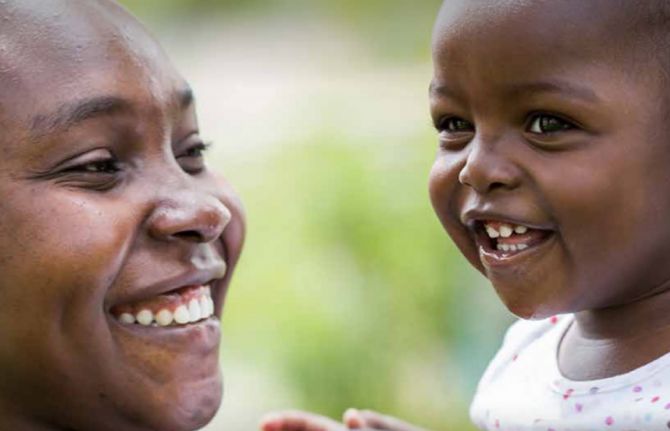
Press Release
UNAIDS calls on countries to accelerate efforts and close service gaps to end the AIDS epidemic among children and adolescents
22 July 2019 22 July 2019As global 2018 targets are unmet, Start Free, Stay Free, AIDS Free report shows that efforts need to focus on the countries falling behind
GENEVA/MEXICO CITY, 22 July 2019—A new report released today at the 10th IAS Conference on HIV Science in Mexico City, Mexico, shows that the world is lagging behind in its commitment to end the AIDS epidemic among children and adolescents. The report, Start Free, Stay Free, AIDS Free, shows that the pace of progress in reducing new HIV infections among children and expanding access to treatment for children, adolescents and pregnant women living with HIV has slowed significantly and that global targets set for 2018 have been missed, despite important gains being made in some countries.
Globally, around 160 000 children aged 0–14 years became newly infected with HIV in 2018. This is a major decrease from 240 000 new infections in 2010. However, the bold and important target set for 2018 was fewer than 40 000 new infections.
“The failure to reach the 2018 targets to reduce new HIV infections among children and adolescents and to widen access to life-saving treatment is both disappointing and frustrating,” said Gunilla Carlsson, UNAIDS Executive Director, a.i. “We need to act quickly to turn this situation around and honour the commitment to end the AIDS epidemic for the next generation.”
Around 82% of pregnant women living with HIV now have access to antiretroviral medicines. There has been considerable progress among countries in eastern and southern Africa, with more than 90% of pregnant women accessing antiretroviral medicines in Ethiopia, Kenya, Uganda, United Republic of Tanzania and Zimbabwe and 95% or higher in Botswana, Malawi, Mozambique, Namibia and Zambia. This has resulted in a 41% reduction in new HIV infections among children, with remarkable reductions achieved in Botswana (85%), Rwanda (83%), Malawi (76%), Namibia (71%), Zimbabwe (69%) and Uganda (65%) since 2010. The progress made by these countries shows what can be achieved through strong political leadership, rapid policy adoption and concerted efforts by all stakeholders.
The report throws light on where gaps need to be filled to prevent new HIV infections occurring among children. For example, in eastern Africa, 10 000 of 26 000 new HIV infections among children in 2018 were the result of women not being retained on treatment throughout pregnancy and breastfeeding. In southern Africa, 17 000 of 53 000 new infections among children were the result of the mother becoming infected with HIV during pregnancy or breastfeeding. A total of 16 000 new infections could have been averted in southern Africa by retaining mothers on treatment throughout pregnancy and breastfeeding. In western and central Africa, almost 27 000 of the 44 000 new infections could have been averted if their mothers had accessed antiretroviral medicines.
“These new data show that many countries have made important progress toward reaching the 2020 targets, and yet others are lagging significantly behind,” said Deborah Birx, United States Global AIDS Coordinator and Special Representative for Global Health Diplomacy. “These stark disparities highlight the critical role of political commitment, rapid policy implementation and data-driven investments in accelerating impact.”
Country-level analysis of how mother-to-child transmission of HIV happens can provide vital information to shape national responses.
“Ending AIDS and achieving universal health coverage means leaving no one behind. Yet, too many children and adolescents with HIV are still missing out on the chance to grow up in full health as they can’t access treatment,” said Ren Minghui, the World Health Organization’s Assistant Director-General for Universal Health Coverage/Communicable and Noncommunicable Diseases. “We need to intensify our efforts to and keep our promise to these children.”
Children living with HIV are also being left behind in HIV treatment scale-up and are not being diagnosed and treated early enough. An estimated 940 000 children aged 0–14 years were accessing treatment in 2018, double the number that were on treatment in 2010 but far short of the target of 1.6 million set for 2018.
Children living with HIV are still less likely to have access to HIV treatment than adults living with HIV, a disparity that is widening in some countries, especially in western and central Africa. As a result, the AIDS epidemic is still claiming the lives of many children aged 0–14 years. Children in this age group comprised 5% of all people living with HIV in 23 focus countries but accounted for 15% of people who died from AIDS-related illnesses in those countries in 2018.
"We know how to prevent children from contracting HIV, and we know how to prevent the onset of AIDS in children if they do become infected. They need to be tested and linked to care and treatment as a matter of urgency, but we are missing these opportunities,” said Henrietta Fore, Executive Director of the United Nations Children’s Fund. “Knowing what to do is not enough. We must come together and act with renewed commitment to children and adolescents living with HIV and give them the best chance to survive and thrive.”
For optimal outcomes, children who become infected with HIV must access treatment as quickly as possible. However, in 2018, only 63% of the 1.1 million infants exposed to HIV in the 23 countries worst affected by the epidemic were tested for HIV by the age of two months.
“In many ways, we as a community have settled for a substandard quality of care for children living with HIV,” said Chip Lyons, President and Chief Executive Officer, Elizabeth Glaser Pediatric AIDS Foundation, “We must not allow children to perpetually receive less than the basic standard of care we demand for adults. Especially when the ultimate consequence of that approach is that children and young people are dying of HIV at disproportionally and unacceptably high rates.”
The report also shows that the target of reducing the annual number of new HIV infections among young women and adolescent girls aged 15–24 years to less than 100 000 by 2020 is unlikely to be reached. Globally, new HIV infections among young women and adolescent girls were reduced by 25% between 2010 and 2018, to 310 000. While new HIV infections among adolescent girls and young women aged 15–24 years have declined by over 40% in Botswana, Burundi, Lesotho and South Africa, missing the global target has meant that 6000 adolescent girls and young women are still becoming infected with HIV every week.
The root factors driving the vulnerability of young women and girls to HIV infection are social, structural and behavioural and must be addressed in order to achieve sustainable prevention outcomes. Gender discrimination, gender-based violence, restricted access to opportunities and a lack of tailored services all compound their vulnerability to HIV. Effective responses prioritize an approach combining access to HIV and sexual and reproductive health services with social, structural and behavioural programmes.
“The disparity in viral load suppression rates among adolescents with HIV compared to adults is unacceptable and behoves the global community to advocate for more robust, potent antiretroviral therapy regimens for adolescents as well as to hasten efforts to prevent new infections in this critically vulnerable population,” said Fatima Tsiouris, Deputy Director of the Clinical and Training Unit and Prevention of Mother-to-Child Transmission Lead at ICAP, Columbia University.
The number of voluntary medical male circumcisions undertaken between 2015 and 2018 stood at over 11 million among all age groups, which means that at least 13 million procedures need to be carried out by 2020 in order to reach the target of voluntarily circumcising 25 million men and boys between 2015 and 2020.
UNAIDS and the United States President’s Emergency Plan for AIDS Relief launched the Start Free, Stay Free, AIDS Free framework in 2016 to build on the achievements of the Global Plan towards the elimination of new HIV infections among children by 2015 and keeping their mothers alive, which ended in 2014.
UNAIDS
The Joint United Nations Programme on HIV/AIDS (UNAIDS) leads and inspires the world to achieve its shared vision of zero new HIV infections, zero discrimination and zero AIDS-related deaths. UNAIDS unites the efforts of 11 UN organizations—UNHCR, UNICEF, WFP, UNDP, UNFPA, UNODC, UN Women, ILO, UNESCO, WHO and the World Bank—and works closely with global and national partners towards ending the AIDS epidemic by 2030 as part of the Sustainable Development Goals. Learn more at unaids.org and connect with us on Facebook, Twitter, Instagram and YouTube.

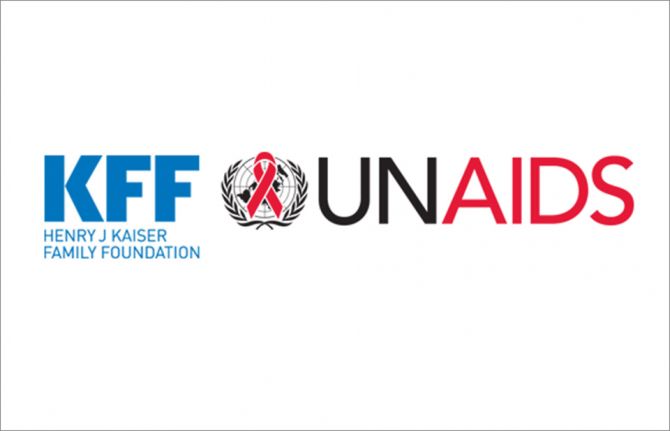
Press Release
Kaiser/UNAIDS analysis finds donor governments spent US$8 billion for HIV in 2018, similar to a decade ago
16 July 2019 16 July 2019U.S. remains top donor, providing more than half the total
GENEVA/UNITED STATES, 16 July 2019—Donor government disbursements to combat HIV in low- and middle-income countries totaled US$8 billion in 2018, little changed from the US$8.1 billion total in 2017 and from the levels of a decade ago, finds a new report from the Kaiser Family Foundation (KFF) and the Joint United Nations Programme on HIV/AIDS (UNAIDS).
Half of the 14 donor governments analyzed in the study increased their spending on global HIV efforts from 2017 to 2018; five decreased their spending; and two held steady. Donor government funding supports HIV care and treatment, prevention and other services in low- and middle-income countries.
The United States remains the world’s largest donor for HIV by far, disbursing US$5.8 billion last year, and also ranks first in disbursements relative to the size of each donor’s economy. The next largest donors are the United Kingdom (US$605 million), France (US$302 million), the Netherlands (US$232 million) and Germany (US$162 million).
Since 2010, donor governments, other than the United States, significantly reduced their funding for HIV, which fell by more than $1 billion in the aftermath of the global financial crisis, and with the competing aid demands of a global refugee crisis and other humanitarian challenges. Most of the decline was in bilateral support.
These donors increased their support for the Global Fund to Fight AIDS, Tuberculosis and Malaria over this period, but not by enough to offset a large drop in bilateral support. When factoring how the Global Fund divides its resources among the three diseases, and reduced funding for UNITAID, multilateral support for HIV has also fallen since 2010.
The data on donor government funding for HIV feed into the broader UNAIDS report Communities at the Centre, which examines all sources of funding for HIV relief, including local governments, non-governmental organizations and the private sector, and compares it to need. According to estimates from that report, there was a decline of $1 billion across all sources of funding between 2017 and 2018, leaving a $7 billion gap between resources and need in 2020 after adjusting for inflation.
“Donor contributions are vital for the AIDS response, particularly in East and South African countries, except South Africa, where the majority of countries rely on donors for 80% of their HIV responses," said Gunilla Carlsson, Executive Director a.i., UNAIDS. "It is disconcerting that in 2018, total available resources for HIV declined by US$ 1 billion. I call on all countries—domestic and donors to urgently increase their investments and close the US$ 7 billion funding gap for the AIDS response.”
“Since the global financial crisis a decade ago, donor governments’ support for HIV has flattened and funding from donors other than the U.S., which has held steady, has gone down,” said KFF Senior Vice President Jen Kates. “Unless this calculus changes, efforts to prevent and treat HIV globally will need to rely increasingly on other sources of funding."
The new report, produced as a long-standing partnership between KFF and UNAIDS, provides the latest data available on donor government funding based on data provided by governments. It includes their bilateral assistance to low- and middle-income countries and contributions to the Global Fund as well as UNITAID. “Donor government funding” refers to disbursements, or payments, made by donors.
The Kaiser Family Foundation
KFF is a non-profit organization focusing on national health issues, as well as the U.S. role in global health policy.
UNAIDS
The Joint United Nations Programme on HIV/AIDS (UNAIDS) leads and inspires the world to achieve its shared vision of zero new HIV infections, zero discrimination and zero AIDS-related deaths. UNAIDS unites the efforts of 11 UN organizations—UNHCR, UNICEF, WFP, UNDP, UNFPA, UNODC, UN Women, ILO, UNESCO, WHO and the World Bank—and works closely with global and national partners towards ending the AIDS epidemic by 2030 as part of the Sustainable Development Goals. Learn more at unaids.org and connect with us on Facebook, Twitter, Instagram and YouTube.
Contact
Kaiser Family FoundationCraig Palosky
tel. +1 (202) 347-5270
cpalosky@kff.org
Kaiser Family Foundation
Nikki Lanshaw
tel. +1 (650) 854-9400
nlanshaw@kff.org
UNAIDS
Sophie Barton-Knott
tel. +41 79 514 6896/+41 22 791 1697
bartonknotts@unaids.org

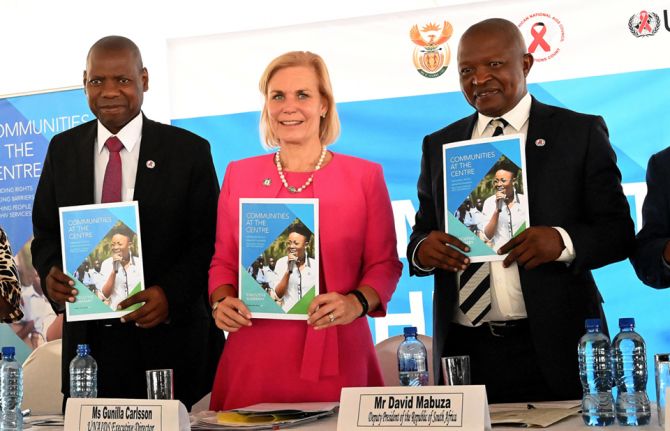
Press Release
UNAIDS calls for greater urgency as global gains slow and countries show mixed results towards 2020 HIV targets
16 July 2019 16 July 2019Impressive advances in some countries, troubling failures in others as available resources for HIV fall by nearly US$ 1 billion
ESHOWE/GENEVA, 16 July 2019—The pace of progress in reducing new HIV infections, increasing access to treatment and ending AIDS-related deaths is slowing down according to a new report released today by UNAIDS. UNAIDS’ Global AIDS Update, Communities at the centre, shows a mixed picture, with some countries making impressive gains while others are experiencing rises in new HIV infections and AIDS-related deaths.
“We urgently need increased political leadership to end AIDS,” said Gunilla Carlsson, UNAIDS Executive Director, a.i., “This starts with investing adequately and smartly and by looking at what’s making some countries so successful. Ending AIDS is possible if we focus on people, not diseases, create road maps for the people and locations being left behind, and take a human rights-based approach to reach people most affected by HIV.”
The report shows that key populations and their sexual partners now account for more than half (54%) of new HIV infections globally. In 2018, key populations—including people who inject drugs, gay men and other men who have sex with men, transgender people, sex workers and prisoners—accounted for around 95% of new HIV infections in eastern Europe and central Asia and in the Middle East and North Africa.
However, the report also shows that less than 50% of key populations were reached with combination HIV prevention services in more than half of the countries that reported. This highlights that key populations are still being marginalized and being left behind in the response to HIV.
Globally, around 1.7 million people became newly infected with HIV in 2018, a 16% decline since 2010, driven mostly by steady progress across most of eastern and southern Africa. South Africa, for example, has made huge advances and has successfully reduced new HIV infections by more than 40% and AIDS-related deaths by around 40% since 2010.
However, there is still a long way to go in eastern and southern Africa, the region most affected by HIV, and there have been worrying increases in new HIV infections in eastern Europe and central Asia (29%), in the Middle East and North Africa (10%) and in Latin America (7%).
The report was launched at a community event in Eshowe, South Africa, by Ms Carlsson and David Mabuza, the Deputy President of South Africa. It contains case studies and testimonies identifying community programmes that can quicken the pace of the response to HIV.
“South Africa has a rich history of communities being at the centre of the AIDS response, so it is fitting that we launch the 2019 UNAIDS Global AIDS Update in this country, in Eshowe, in KwaZulu-Natal, where a community-based service delivery model, with HIV at its centre, is showing results,” said Deputy President Mabuza.
Financing
Disconcertingly, the report shows that the gap between resource needs and resource availability is widening. For the first time, the global resources available for the AIDS response declined significantly, by nearly US$ 1 billion, as donors disbursed less and domestic investments did not grow fast enough to compensate for inflation. In 2018, US$ 19 billion (in constant 2016 dollars) was available for the AIDS response, US$ 7.2 billion short of the estimated US$ 26.2 billion needed by 2020.
To continue progress towards ending AIDS, UNAIDS urges all partners to step up action and invest in the response, including by fully funding the Global Fund to Fight AIDS, Tuberculosis and Malaria with at least US$ 14 billion at its replenishment in October and through increasing bilateral and domestic funding for HIV.
Treatment and the 90–90–90 targets
Progress is continuing towards the 90–90–90 targets. Some 79% of people living with HIV knew their HIV status in 2018, 78% who knew their HIV status were accessing treatment and 86% of people living with HIV who were accessing treatment were virally suppressed, keeping them alive and well and preventing transmission of the virus.
Communities at the centre shows however that progress towards the 90–90–90 targets varies greatly by region and by country. In eastern Europe and central Asia for example, 72% of people living with HIV knew their HIV status in 2018, but just 53% of the people who knew their HIV status had access to treatment.
“I’ve been on treatment for 16 years, am virally suppressed and doing well,” said Sthandwa Buthelezi, founder of Shine, an organization in Eshowe that addresses stigma and discrimination in the community. “But stigma and discrimination are still widespread, particularly in health care settings. As an activist, I encourage everyone, including community leaders, to talk openly about HIV so that people can live positively and shine.”
AIDS-related deaths
AIDS-related deaths continue to decline as access to treatment continues to expand and more progress is made in improving the delivery of HIV/tuberculosis services. Since 2010, AIDS-related deaths have fallen by 33%, to 770 000 in 2018.
Progress varies across regions. Global declines in AIDS-related deaths have largely been driven by progress in eastern and southern Africa. In eastern Europe and central Asia however, AIDS-related deaths have risen by 5% and in the Middle East and North Africa by 9% since 2010.
Children
Around 82% of pregnant women living with HIV now have access to antiretroviral medicines, an increase of more than 90% since 2010. This has resulted in a 41% reduction in new HIV infections among children, with remarkable reductions achieved in Botswana (85%), Rwanda (83%), Malawi (76%), Namibia (71%), Zimbabwe (69%) and Uganda (65%) since 2010. Yet there were nearly 160 000 new HIV infections among children globally, far away from the global target of reducing new HIV infections among children to fewer than 40 000 by 2018.
More needs to be done to expand access to treatment for children. The estimated 940 000 children (aged 0–14 years) living with HIV globally on antiretroviral therapy in 2018 is almost double the number on treatment in 2010. However, it is far short of the 2018 target of 1.6 million.
Women and adolescent girls
Although large disparities still exist between young women and young men, with young women 60% more likely to become infected with HIV than young men of the same age, there has been success in reducing new HIV infections among young women. Globally, new HIV infections among young women (aged 15–24 years) were reduced by 25% between 2010 and 2018, compared to a 10% reduction among older women (aged 25 years and older). But it remains unacceptable that every week 6200 adolescent girls and young women become infected with HIV. Sexual and reproductive health and rights programmes for young women need to be expanded and scaled up in order to reach more high-incidence locations and maximize impact.
HIV prevention
Communities at the centre shows that the full range of options available to prevent new HIV infections are not being used for optimal impact. For example, pre-exposure prophylaxis (PrEP), medicine to prevent HIV, was only being used by an estimated 300 000 people in 2018, 130 000 of whom were in the United States of America. In Kenya, one of the first countries in sub-Saharan Africa to roll out PrEP as a national programme in the public sector, around 30 000 people accessed the preventative medicines in 2018.
The report shows that although harm reduction is a clear solution for people who inject drugs, change has been slow. People who inject drugs accounted for 41% of new HIV infections in eastern Europe and central Asia and 27% of new HIV infections in the Middle East and North Africa, both regions that are lacking adequate harm reduction programmes.
Men remain hard to reach. Viral suppression among men living with HIV aged 25–34 years is very low, less than 40% in some high-burden countries with recent surveys, which is contributing to slow progress in stopping new HIV infections among their partners.
Stigma and discrimination
Gains have been made against HIV-related stigma and discrimination in many countries but discriminatory attitudes towards people living with HIV remain extremely high. There is an urgency to tackle the underlying structural drivers of inequalities and barriers to HIV prevention and treatment, especially with regard to harmful social norms and laws, stigma and discrimination and gender-based violence.
Criminal laws, aggressive law enforcement, harassment and violence continue to push key populations to the margins of society and deny them access to basic health and social services. Discriminatory attitudes towards people living with HIV remain extremely high in far too many countries. Across 26 countries, more than half of respondents expressed discriminatory attitudes towards people living with HIV.
Communities
The report highlights how communities are central to ending AIDS. Across all sectors of the AIDS response, community empowerment and ownership has resulted in a greater uptake of HIV prevention and treatment services, a reduction in stigma and discrimination and the protection of human rights. However, insufficient funding for community-led responses and negative policy environments impede these successes reaching full scale and generating maximum impact.
In KwaZulu-Natal in South Africa, one in four adults (aged 15–59 years) were living with HIV in 2016. To advance the response, Médecins Sans Frontières managed a community-based approach to HIV testing that links people to treatment and supports them to remain in care. By 2018, the 90–90–90 targets were achieved in Eshowe town, rural Eshowe and Mbongolwane, well ahead of the 2020 deadline.
Another study in South Africa and Zambia enrolled hundreds of Community HIV Care Providers (CHIPS) over five years to visit homes, provide information about HIV and offer HIV testing and linkage to care. The study found that areas with CHIPS communities had around 20% fewer new HIV infections each year and the proportion of people living with HIV who knew their HIV status, were on antiretroviral therapy and were virally suppressed increased from 54% to more than 70%.
UNAIDS urges countries to live up to the commitment made in the 2016 United Nations Political Declaration on Ending AIDS for community-led service delivery to be expanded to cover at least 30% of all service delivery by 2030. Adequate investments must be made in building the capacity of civil society organizations to deliver non-discriminatory, human rights-based, people-centred HIV prevention and treatment services in the communities most affected by HIV.
|
In 2018, an estimated: 37.9 million [32.7 million–44.0 million] people globally were living with HIV 23.3 million [20.5 million–24.3 million] people were accessing antiretroviral therapy 1.7 million [1.4 million–2.3 million] people became newly infected with HIV 770 000 [570 000–1.1 million] people died from AIDS-related illnesses |
UNAIDS
The Joint United Nations Programme on HIV/AIDS (UNAIDS) leads and inspires the world to achieve its shared vision of zero new HIV infections, zero discrimination and zero AIDS-related deaths. UNAIDS unites the efforts of 11 UN organizations—UNHCR, UNICEF, WFP, UNDP, UNFPA, UNODC, UN Women, ILO, UNESCO, WHO and the World Bank—and works closely with global and national partners towards ending the AIDS epidemic by 2030 as part of the Sustainable Development Goals. Learn more at unaids.org and connect with us on Facebook, Twitter, Instagram and YouTube.

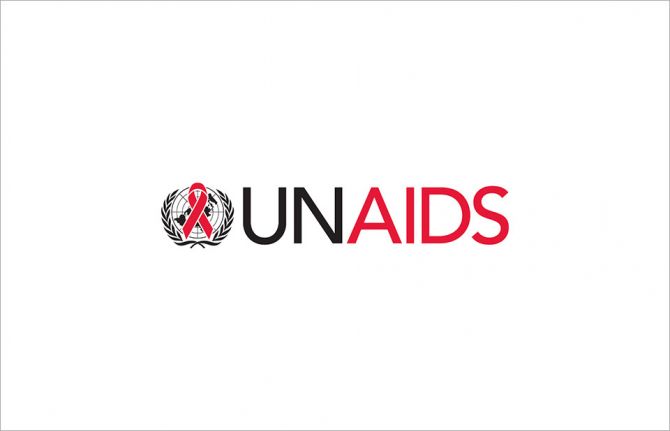
Press Release
UNAIDS calls for the immediate release of NGO members arrested in Malawi
11 July 2019 11 July 2019GENEVA, 10 July 2019—UNAIDS regrets unnecessarily involving the authorities in Malawi in its outstanding issue with the Mango Network. UNAIDS and the Mango Network have amicably reached a resolution over the issue. UNAIDS has not engaged in any legal action and believes there is no need for any legal action. UNAIDS respectfully requests the immediate release of the two members of the Mango Network, Mr Gift Trapence and Mr Macdonald Sembereka, from police custody.
UNAIDS is strongly supportive of the full empowerment and engagement of civil society organizations in the AIDS response. It looks forward to continuing its partnership with community and civil society organizations in ensuring that all people affected by HIV have access to HIV prevention, treatment and social support services and that their human rights are protected.
UNAIDS
The Joint United Nations Programme on HIV/AIDS (UNAIDS) leads and inspires the world to achieve its shared vision of zero new HIV infections, zero discrimination and zero AIDS-related deaths. UNAIDS unites the efforts of 11 UN organizations—UNHCR, UNICEF, WFP, UNDP, UNFPA, UNODC, UN Women, ILO, UNESCO, WHO and the World Bank—and works closely with global and national partners towards ending the AIDS epidemic by 2030 as part of the Sustainable Development Goals. Learn more at unaids.org and connect with us on Facebook, Twitter, Instagram and YouTube.

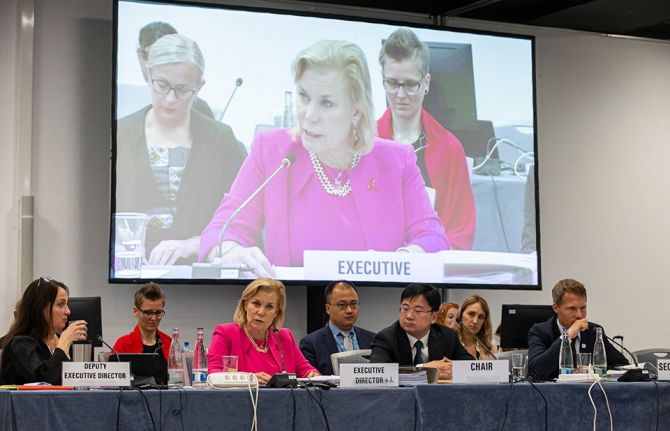

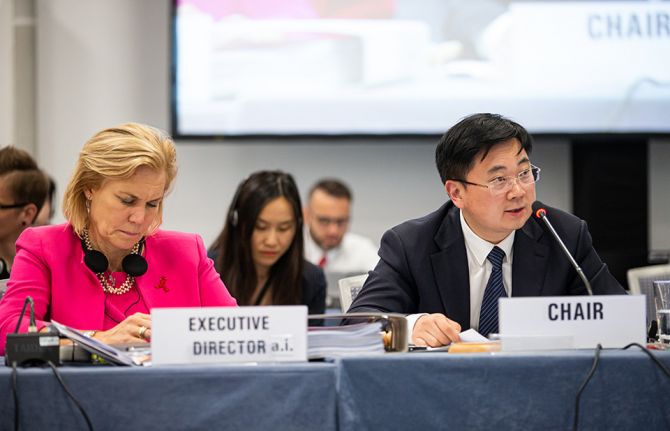

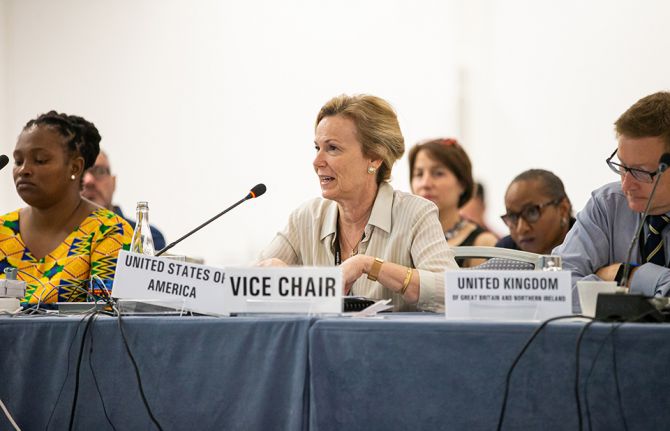
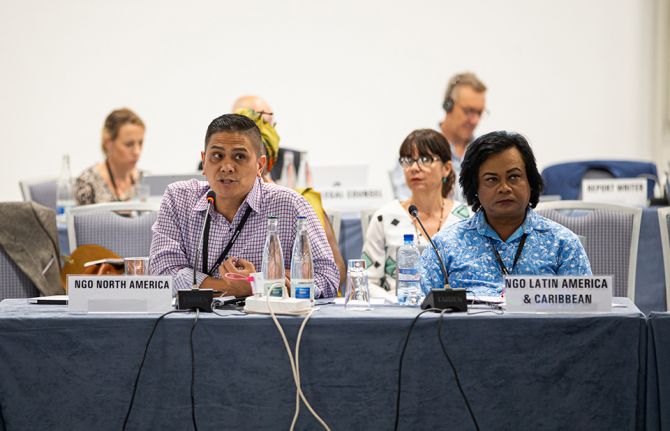
Press Release
UNAIDS Board welcomes the UNAIDS Management Action Plan and advances the nomination process for the next UNAIDS Executive Director
28 June 2019 28 June 2019Board members also approve UNAIDS 2020-2021 budget and the establishment of an independent evaluation function
GENEVA, 28 June 2019—UNAIDS’ 44th Programme Coordinating Board (PCB) meeting has concluded in Geneva, Switzerland. The board, which met from 25-27 June 2019, was presented with a short list of candidates for the position of Executive Director of UNAIDS and heard from the chair of the Search Committee who introduced the Committee’s report.
The Board commended the strong competencies of all short-listed candidates and provided comments on the short list and on the key competencies for the next Executive Director. Members of the Board recognized the integrity of the process and called for the continued protection of the confidentiality of the candidates. The PCB Chair will send the report of the Search Committee, chaired by Yury Ambrazevich, Ambassador of the Republic of Belarus to the United Nations in Geneva, and the recording of the discussions to the Committee of Cosponsoring Organizations, which will make its recommendation to the United Nations Secretary-General. The UN Secretary-General will make the final decision about the appointment of the next Executive Director of UNAIDS.
In her opening address, Gunilla Carlsson, Executive Director a.i. of UNAIDS reiterated the importance of partnerships and of galvanizing political leadership to reach the 2020 Fast-Track targets. “Continuing efforts to eliminate the stigma and discrimination, both HIV-related and more generally, that impedes our work to reach everyone will be necessary to end the AIDS epidemic by 2030,” she said. Ms. Carlsson also thanked the former Executive Director, Michel Sidibé, for his leadership over the last ten years.
Board members also welcomed UNAIDS efforts, through the Management Action Plan, to ensure that the UNAIDS Secretariat is a healthy, equitable and enabling workplace for all staff. Board members heard about the prevention of and the response to harassment from the PCB Working Group, which provided recommendations to the Board to more effectively monitor and guide the work of UNAIDS Secretariat in strengthening and further institutionalizing existing systems to tackle harassment, including sexual harassment, bullying and abuse of authority at the UNAIDS Secretariat. The working group presented their report to the PCB in which they welcomed the actions taken to date by the UNAIDS Secretariat––and the many still planned – to eliminate all forms of harassment from its workplace and to develop a fully enabling workplace environment.
Following on from the thematic segment on mental health and HIV at the 43rd board meeting in December 2018, the board called on member states to implement evidence-based policies and programmes, grounded in human rights to promote mental health and quality of life for people living with and affected by HIV, including addressing stigma and discrimination. They also called on the UNAIDS joint programme to review and revise existing guidelines to ensure better integration between HIV and mental health services.
The Board approved UNAIDS 2020-2021 budget of US$ 484 million and the proposed allocation between the 11 cosponsors and the Secretariat. As part of efforts to strengthen accountability, transparency, organizational learning and change within the UNAIDS Secretariat, UNAIDS Programme Coordinating Board has approved the establishment of an independent evaluation office which reports to the Board.
The Board meeting included a full-day thematic session on Delivering SDG 3: Strengthening and integrating comprehensive HIV responses into sustainable health systems for Universal Health Coverage. Presentations and statements encouraged Universal Health Coverage efforts to heed the lessons of the HIV response: inclusive health governance; community-based services; responsiveness to human rights principles and the needs of the most vulnerable; innovative health financing; and holistic efforts to address the social and structural determinants of health.
Representatives of United Nations Member States, international organizations, civil society and nongovernmental organizations attended the three-day meeting, which was chaired by China, with the United States of America serving as Vice-Chair and Belarus as Rapporteur.
The report to the Board by UNAIDS Executive Director a.i. and the Board’s decisions can be found at https://www.unaids.org/en/whoweare/pcb/44.
UNAIDS
The Joint United Nations Programme on HIV/AIDS (UNAIDS) leads and inspires the world to achieve its shared vision of zero new HIV infections, zero discrimination and zero AIDS-related deaths. UNAIDS unites the efforts of 11 UN organizations—UNHCR, UNICEF, WFP, UNDP, UNFPA, UNODC, UN Women, ILO, UNESCO, WHO and the World Bank—and works closely with global and national partners towards ending the AIDS epidemic by 2030 as part of the Sustainable Development Goals. Learn more at unaids.org and connect with us on Facebook, Twitter, Instagram and YouTube.
Contact
UNAIDS GenevaSophie Barton-Knott
tel. +41 22 791 1697
bartonknotts@unaids.org
UNAIDS Media
tel. +41 22 791 4237
communications@unaids.org
PCB-44
Press centre
Download the printable version (PDF)
